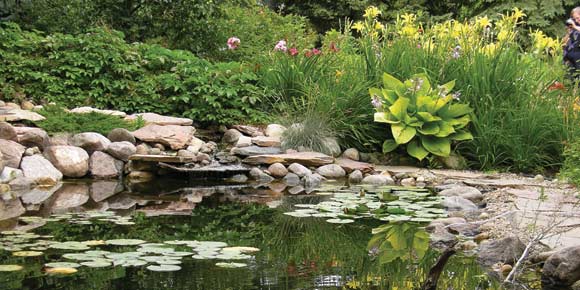Until recently, we were living in a chemical world where it was hard to avoid pesticides, insecticides, herbicides and every other kind of ‘cides you can think of. They showed up in your food and your living environment and then in your body — not to mention the bodies of our kids and pets.
Now most of those chemicals have been removed from the retail shelf and while it can be a bit frustrating, maybe Ted Perry had it right when he wrote that Chief Seattle said that all things are connected and that whatever befalls man befalls the earth. We are companions and knowing how best to live together as plants and animals, in a balanced way, is probably the best plan for a beautiful tomorrow.
So what to do? Long before the chemical world was born, people raised healthy gardens expecting cycles of infestation by insects or disease. When these cycles happened, they planted something else for the duration. Crop rotation is still a good practice.
Over time, pathogens — fungi or parasitic nematodes — build up around plant populations. In the natural world, plants deal with this by dispersing their seeds to new locations, but in gardens we discourage this through constant deadheading and other practices consistent with our desire for order.
Most of us believe that eventually “the soil just wears out”, depleted of all its nutrients, but think of the vast prairie or forests that have existed for thousand of years. While dense plant life draws quantities of nutrients from the top soils, the plants also continuously return those nutrients to the soil as dropping leaves and decaying plants.
Lesson Number One
Return plant material to plant beds, whether as green material or as compost. The soil has unlimited nutrition as long as the plants can access it — the mineral content is always there, deep in the earth. But continued clearing of dying garden material can speed depletion of nutrients that are there in the top seven inches of soil where most garden plants have their roots. Returning foliage to the soil returns phosphorus, potassium, nitrogen and all the other nutrients that were taken up as building blocks of the stems and leaves in the first place. At the same time, plant material will improve the structure of the soil. By spring, the herbaceous material has largely broken down and can be readily incorporated into the soil.
Lesson Number Two
Rotate your crops in a vegetable garden or move plants from time to time in a flower garden. A key reason for this is to avoid the build-up of pathogens that will collect around a certain species, in effect “poisoning” the soil, but a secondary reason is that some plants reach deeper into the soil than others, accessing nutrients from a new source. Grow nitrogen-fixing plants — leguminous plants such as lupines, beans, baptisia or sweet peas — to help other plants access nitrogen the natural way. Clover also has nitrogen-fixing properties.
Lesson Number Three
Don’t make your yard a chemical dump. Avoid chemical interference as much as possible by following lessons numbers one and two. If a particular insect is a problem, then introduce plants that can help by either acting as an attractive alternative or grow plants that will produce a natural repellent.
Sure, clean up those weeds, but don’t worry if one or two survive. Dandelions dredge up vast amounts of nutrition from deeper in the soil. Clover fixes nitrogen in your lawn. Dead nettle repels the potato bug. Grown near aromatic herbs, stinging nettles increase the aromatic oils by up to 80 percent. And of course we all know that basil loves tomatoes, but tomatoes also like bee balm. The more we know of these relationships, the better natural gardeners we’ll become.
Dorothy Dobbie is the owner and creator of Manitoba Gardener magazine, in its 20th year of publication in 2018. If you would like to subscribe, call jane at 204-940-2700 or go to www.localgardener.net



